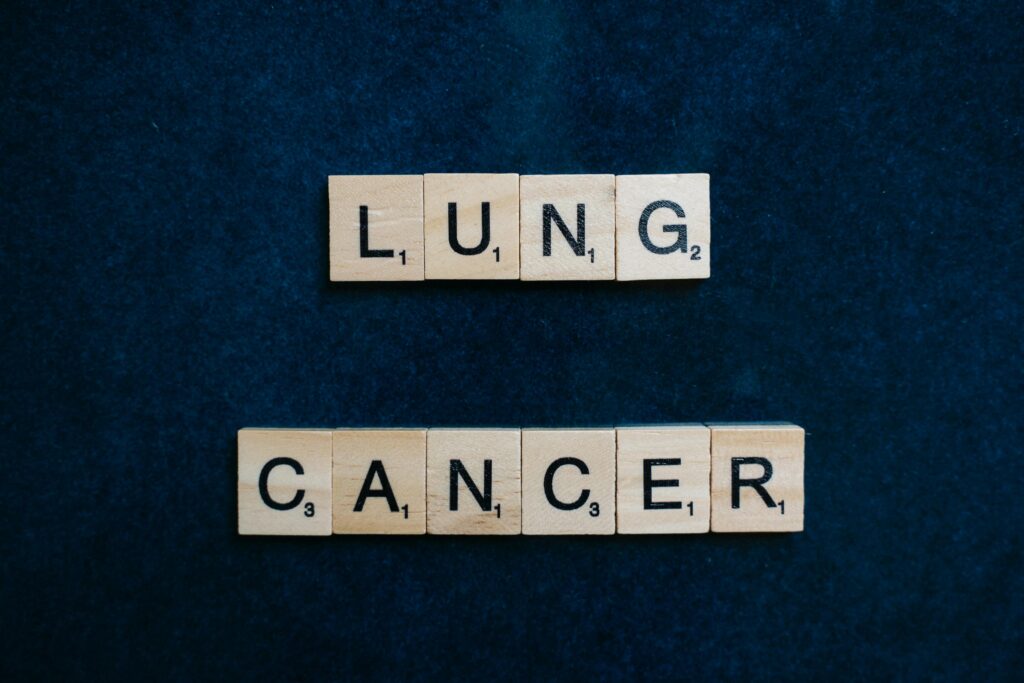
Lung cancer is a type of cancer that begins in the lungs. It is one of the most common types of cancer and a leading cause of cancer deaths globally. There are two main types of lung cancer: non-small cell lung cancer (NSCLC) and small cell lung cancer (SCLC).
What is Lung Cancer?
Definition and Types of Lung Cancer
Lung cancer occurs when abnormal cells in the lung grow out of control. NSCLC is the most common type of lung cancer, accounting for about 85% of cases, while SCLC is less common but tends to spread more quickly.
Symptoms and Diagnosis
Symptoms of lung cancer can vary but may include a persistent cough, chest pain, hoarseness, and shortness of breath. Diagnosis often involves imaging tests like X-rays and CT scans, as well as biopsy to confirm the presence of cancer cells.
Treatment Options
Treatment for lung cancer depends on the type and stage of the cancer. Options may include surgery, chemotherapy, radiation therapy, targeted therapy, and immunotherapy.
How Does Smoking Contribute to Lung Cancer Risk?
Effects of Cigarette Smoke on the Lungs
Cigarette smoke contains harmful chemicals that can damage the cells in the lungs. Prolonged exposure to tobacco smoke can lead to genetic mutations in lung cells, increasing the risk of cancer development.
Link Between Smoking and Lung Cancer
Smoking is the primary risk factor for lung cancer. Research has shown that smokers are at a much higher risk of developing lung cancer compared to non-smokers. In fact, smoking causes about 85% of all lung cancer cases.
Secondhand Smoke Exposure
Exposure to secondhand smoke, also known as passive smoking, can also increase the risk of lung cancer in non-smokers. Breathing in smoke from other people’s cigarettes can be just as harmful as smoking itself, significantly increasing the risk for lung cancer among non-smokers.
What Are the Major Risk Factors for Lung Cancer?
Smoking as the Primary Risk Factor
As mentioned, smoking is the primary risk factor for lung cancer, indicating the strong link between smoking status and cancer risk. The longer and more cigarettes one smokes, the higher the risk of developing the disease, making smoking history a crucial determinant in assessing risk for lung cancer. Quitting smoking can significantly reduce the risk over time.

Other Environmental Risk Factors
Exposure to radon gas, asbestos, and other carcinogens in the environment can also contribute to an increased risk of lung cancer. Occupational exposure to certain chemicals and pollutants is another factor to consider in the increased risk for lung cancer in individuals.
Familial History and Genetic Predisposition
Individuals with a family history of lung cancer or specific genetic mutations may have an increased susceptibility to the disease, making them more vigilant about lung cancer may risk factors. Genetic testing can help identify those at higher risk.
Can Lung Cancer be Prevented?
Smoking Cessation and Risk Reduction
Quitting smoking is the most effective way to reduce the risk of developing lung cancer. Former smokers still have a higher risk than those who never smoked, but the risk decreases over time after quitting, marking an important fact for managing smoking status in preventing lung cancer.
Healthy Lifestyle Choices and Lung Cancer Prevention
Adopting a healthy lifestyle that includes a balanced diet, regular exercise, and avoiding exposure to harmful substances can help reduce the overall risk of cancer, including lung cancer in the United States.
Screening and Early Detection
Lung cancer screening with low-dose CT scans is recommended for individuals at high risk, such as current or former smokers. Early detection through screening can lead to better treatment outcomes and improved survival rates for patients with lung cancer.
What Are the Latest Advancements in Lung Cancer Research?
Immunotherapy and Targeted Therapies
Immunotherapy and targeted therapies are revolutionizing the treatment of lung cancer, offering new hope for patients with lung cancer. These therapies work by boosting the body’s immune response to cancer cells or targeting specific genetic mutations driving the growth of cancer.
Potential Vaccines for Lung Cancer Prevention
Researchers are investigating the development of vaccines that could help prevent lung cancer in high-risk populations. These vaccines would stimulate the immune system to recognize and attack cancer cells before they develop into tumors, potentially revolutionizing cancer treatment.
Advances in Early Detection Techniques
New imaging technologies and blood tests are being developed for the early detection of lung cancer. Early diagnosis is crucial for improving survival rates and enabling timely intervention.
Q: What are the risk factors for lung cancer?
A: The main risk factor for lung cancer is smoking, which accounts for the majority of cases. Other risk factors include exposure to secondhand smoke, radon gas, asbestos, and air pollution.
Q: How does smoking cause lung cancer?
A: Smoking introduces harmful chemicals into the lungs, which can damage the cells in the lining of the lungs. Over time, this damage can lead to the development of cancerous tumors, underscoring how accumulated damage may cause cancer.
Q: What is the connection between smoking and cancer?
A: Smoking is the primary cause of lung cancer and is also linked to several other types of smoking-related cancer, including throat, mouth, and esophageal cancer.
Q: Does smoking increase your risk of getting lung cancer?
A: Yes, smoking is the leading cause of lung cancer and significantly increases an individual’s risk of developing the disease.
Q: Are there different types of lung cancer?
A: Yes, there are two main types of lung cancer: non-small cell lung cancer and small cell lung cancer. Each type has different characteristics and treatment options.
Q: How can I lower my risk of smoking-related lung cancer?
A: The most effective way to reduce your risk of smoking-related lung cancer is to quit smoking. Avoiding exposure to secondhand smoke and environmental carcinogens can also help lower your risk.
Q: What are the statistics on lung cancer deaths related to smoking?
A: Smoking is responsible for around 85% of lung cancer cases.










